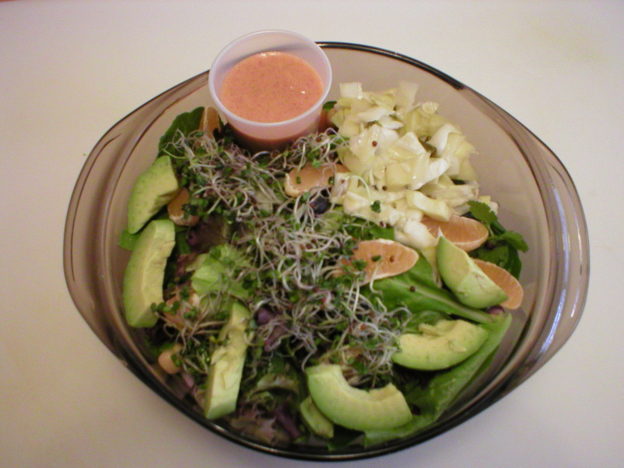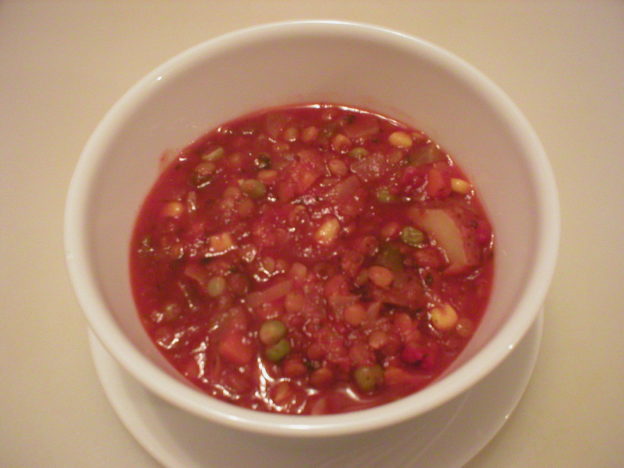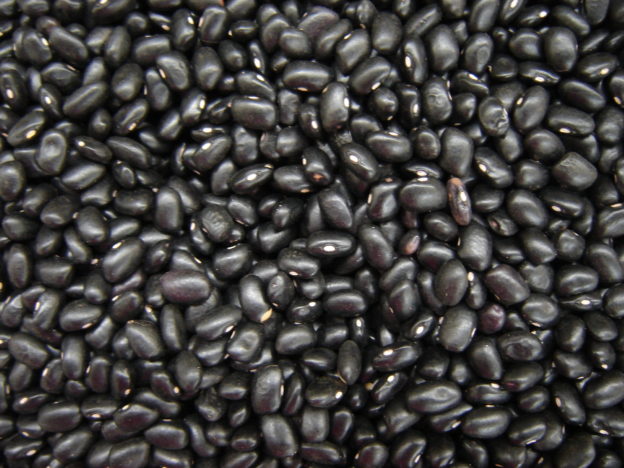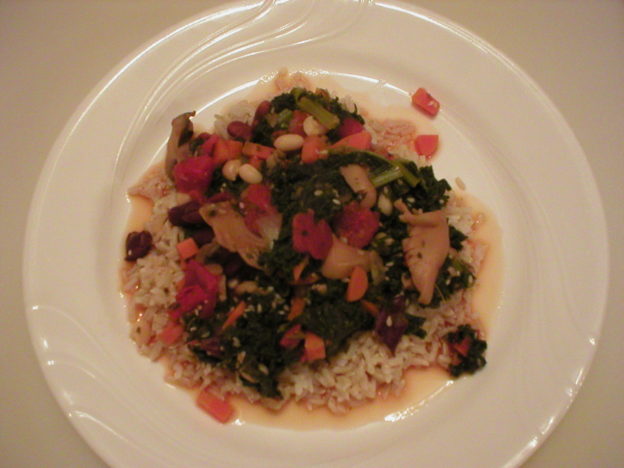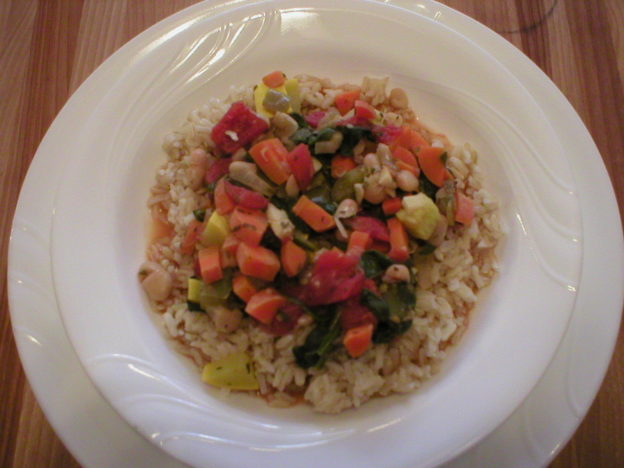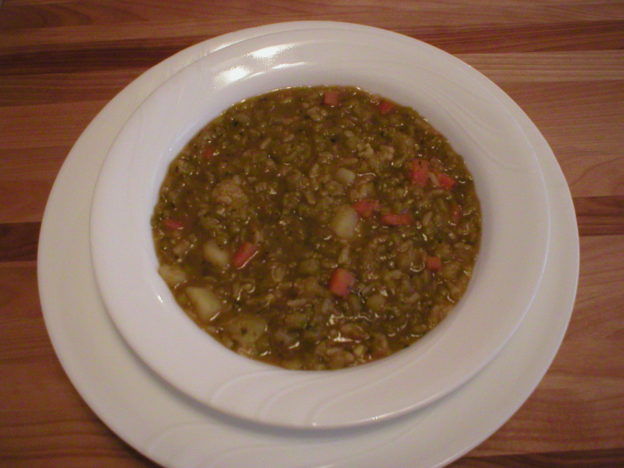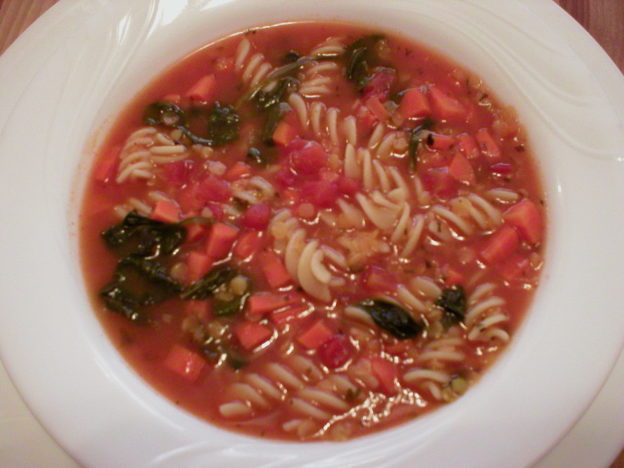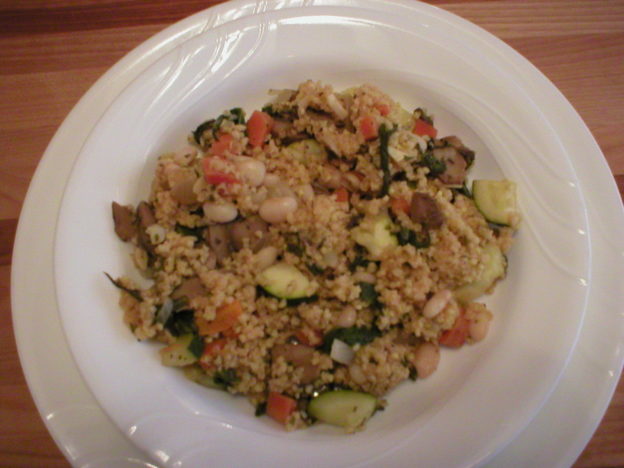Below is a comprehensive article all about our beloved pinto beans! Everything from what they are to how to cook and use them is covered. So, if you have a specific question about what to do with pinto beans, you should find what you are looking for below!
Enjoy,
Judi
About Pinto Beans
Most people are familiar with pinto beans, with their beige color with splashes of brown. When cooked, they become pinkish in color with a creamy texture. Pinto beans are among the “common beans” that appear to have originated in Peru. From there, they spread throughout the Americas, then to Europe when Spanish explorers introduced them after returning from voyages to the New World in the 15th century. Spanish and Portuguese traders introduced them to Africa and Asia. Today, the world’s largest producers of dried common beans are India, China, Indonesia, Brazil, and the United States.
Since beans are an inexpensive source of protein, they have become popular in many cultures around the world. Today, pinto beans are the most commonly eaten bean in the United States. They can be eaten whole, mashed, pureed, refried, simmered and stewed.
Nutrition and Health Benefits of Pinto Beans
Pinto beans are an excellent source of the essential trace mineral molybdenum. They are also a good source of fiber, folate, copper, manganese, phosphorus, protein, Vitamin B1, Vitamin B6, magnesium, potassium, and iron. One cup of cooked pinto beans has about 245 calories. Pinto beans are also a good source of some phytonutrients that have been shown to help prevent some cancers, notably stomach cancer.
Fiber. Like other beans, pinto beans are high in fiber. A one cup serving provides 15 grams of fiber. Of that, 4 grams are soluble fiber. This type of fiber forms a gel-like substance in the digestive tract and binds with bile removing it from the body. The body is then prompted to make more needed bile acids, and it uses cholesterol in the process. So, in an indirect way, soluble fiber helps to reduce blood cholesterol. Translation…eating pinto beans helps to lower your cholesterol!
The remaining fiber in pinto beans is the insoluble variety. This is known to help speed the movement of gastrointestinal contents, warding off constipation. It also helps to prevent digestive disorders such as irritable bowel syndrome and diverticulosis.
Heart Attack Risk. In a study that compared the food intake of over 16,000 middle-aged men in various countries, researchers found an 82% decrease in heart attack risk in those who ate the most legumes. In another study published in the Archives of Internal Medicine, researchers followed about 10,000 Americans for 19 years. Those who ate the most fiber (21 grams per day) had far less risk of heart disease than those who ate the least fiber (about 5 grams daily).
The nutrient profile in pinto beans also contributes to their aid in reducing the risk of cardiovascular disease. Folate is known to lower homocysteine levels. Homocysteine is an amino acid that is known to be an independent risk factor for heart disease when its levels are elevated. Having an adequate amount of folate in the diet helps to keep homocysteine levels in check, and eating pinto beans can help with that.
Furthermore, magnesium, also found in pinto beans, acts as nature’s calcium channel blocker. This helps to improve blood flow and the transport of oxygen and nutrients around the body. Researchers have found that a deficiency in magnesium is associated with heart attacks.
Potassium, also plentiful in pinto beans, is an important electrolyte in the body, used in nerve transmission and muscle contraction. This makes potassium important for maintaining normal blood pressure and heart function. A one cup serving of pinto beans provides 746 mg of potassium and only 1.7 mg of sodium, making them a noteworthy food to eat for preventing high blood pressure and preventing atherosclerosis and stroke.
Blood Sugar Control. The benefits of the fiber in pinto beans doesn’t stop with GI transit time and cholesterol removal from the body. It also helps to stabilize blood sugar levels. This is especially helpful for those with insulin resistance or diabetes. People eating high fiber diets have been shown to have lower blood sugar and insulin levels, and lower total cholesterol, triglycerides, and VLDL (very low-density lipoproteins) blood levels. These are all markers for heart disease and are often elevated in those with diabetes and insulin resistance.
Sulfite Sensitivity. Pinto beans are an excellent source of molybdenum, a trace mineral that is part of the enzyme that metabolizes sulfites. Sulfites are added to many foods and even medications as preservatives. Yet, some people are sensitive to sulfites, causing a rapid heartbeat, headache and disorientation. Those who react to sulfites may be deficient in molybdenum. If this is the case, pinto beans may help alleviate that problem.
Iron. Pinto beans are a good source of the essential mineral iron. Iron is a crucial part of hemoglobin, the molecule that transports oxygen in the blood. Iron deficiency leads to fatigue because not enough oxygen is reaching tissues around the body. Furthermore, the mineral copper (which is plentiful in pinto beans) is used in the making of hemoglobin. Anyone who suffers from low iron levels would benefit by including pinto beans in their meals when possible.
Energy Production and Antioxidant Defense. If all that’s not enough, pinto beans are a good source of manganese and copper. These two minerals are key components of an enzyme (superoxide dismutase) that disarms free radicals in the mitochondria (the cellular organelle where energy is produced). Copper is also used in another enzyme (lysyl oxidase) used in the production of collagen and elastin, important in making our blood vessels, bones and joints.
Memory. Vitamin B1 (thiamine) is critical for proper cognitive brain functioning. Thiamine is used in the making of acetylcholine, a vital neurotransmitter used in the memory function. Low levels of acetylcholine have been associated with age-related senility and Alzheimer’s disease. Since pinto beans are a good source of thiamine, it’s another powerful reason to eat these beans when you can!
Protein. Eating pinto beans is an easy way to add protein to your menu when looking for a meat alternative. Combine them with a grain product, like rice, pasta, or a tortilla, and you have an amino acid combination that will rival any animal food you can name. Furthermore, it will be free of cholesterol and saturated fat, and have fewer calories. One cup of pinto beans provides over 15 grams of protein. When combining 1 cup of cooked pinto beans with 1 cup of brown rice, the protein level jumps to 21 grams!
How to Select Pinto Beans
Dried Pinto Beans. Dried pinto beans are usually found pre-packaged in most grocery stores in America. They may also be found in bulk bins. As when purchasing any dried food, whether it is pre-packaged or in bulk bins, be sure there is no sign of moisture or insects in the beans. When purchasing from bulk bins, it’s best to purchase from a store than has a good turnover of product to be sure they are not old.
Canned Pinto Beans. Canned beans are a very convenient alternative to their dried counterparts. Most grocery stores carry them. Read the ingredients list because some canned beans are processed with additives and flavorings that you may or may not want.
If you’re concerned with BPA (bisphenol A) that has been a common anticorrosive component of can liners and other products, check the label or information that was stamped on the can. Many processors are now using BPA-free liners. If the label or can does not state BPA-free, it may contain BPA.
How to Store Pinto Beans
Dried Pinto Beans. Store dried pinto beans in an airtight container in a dry, cool, dark place. They should keep well for 1 to 3 years. Depending on conditions, they may keep well for longer than that, but their quality may deteriorate over time, although they should still be safe to eat. If they have any signs of mold or moisture on them, or insect or rodent damage, they should not be eaten. [Note that the longer dried beans are stored, the longer they may need to cook to get tender. They absolutely should be soaked before being cooked, which will help to shorten the cooking time.]
Canned Pinto Beans. For the longest shelf life, store canned pinto beans in a cool, dry place. An unopened commercially processed can will usually last 3 to 5 years for best quality. They are still safe to eat after the expiration date if the can is not damaged and they were stored in a cool, dry place. Note that the quality may decline with age, with changes in color, flavor, and texture. If the can was bulging, rusting, severely damaged, or if you notice an “off” odor, flavor, or appearance when opened, the beans are not safe to eat and should be discarded.
Cooked pinto beans or unused beans from opened cans will keep well in a covered container in the refrigerator for 3 to 5 days.
How to Preserve Cooked Pinto Beans
If you’ve cooked more dried pinto beans then you can eat within a reasonable amount of time, the extra beans may be frozen. Simply transfer them to a freezer container or bag. Label them with the contents and date and store them in the freezer for up to 6 months for best quality. They will be safe to eat beyond that, but their quality may decline over time.
Dried vs Canned Pinto Beans
Cost. When comparing cost per serving, dried beans are cheaper than canned beans. The cost of a serving of canned beans is usually about twice that of cooked dried beans. Even if we were to take into consideration the cost of the water and electricity used in cooking the dried beans, the dried beans would very likely still be cheaper. So, if you’re looking for ways to save on groceries, buy dried beans and take the time to cook them. To use less water and electricity in the long run, cook a big batch (a pound or two of beans) at one time and store the extra cooked beans in the freezer. They’ll be ready when you need them.
Convenience. Needless to say, canned beans are more convenient than dried beans. You simply open the can, rinse and drain the beans, and they’re ready to use. The canned beans are an excellent choice if you’re always short on time and can’t (or don’t want to) take the time to cook dried beans. Also, canned beans should be a staple item kept in your pantry in case of an emergency. If the power goes out or if you temporarily lose your water supply, canned beans can be eaten straight from the can. They can be a lifesaving source of food when there is no way to cook. It’s better to be prepared, and not need it, then need it and not be prepared!
Many people believe cooking dried beans is a big ordeal. However, when considering “hands on” time, it’s actually very little. It takes little time to sort and rinse the beans then cover them with water in a pot. After being soaked, it takes little time to drain them then refill the pot with water. The cooking process pretty much takes care of itself. Then draining them takes little time, again. So, it’s really not hard nor time-consuming to cook dried beans when considering actual hands-on time. Furthermore, they can be cooked in a slow cooker or pressure cooker to make things a little simpler.
Nutritional Value. The nutritional value of canned pinto beans is about the same as cooked dried pinto beans. Either way, the beans need to be cooked completely before being eaten or canned, so they should have about the same nutrient content. So, this factor should not be a determinant when considering which form of pinto bean to buy.
Additives. If you want to avoid any additives in your foods, cooking dried beans is your best option. In this case, you can control what is added to the beans. Canned beans may have added salt and other ingredients as firming or color retention agents. Organic canned beans will not have firming or color retention agents, but still may have added salt. So, if salt is no issue, organic beans may be a good choice for you. Otherwise, cooking dried beans gives you complete control as to what is added to your beans.
BPA. BPA (bisphenol-A) is an anticorrosive agent that has been used in can linings and other applications such as water bottles, bottle caps, water supply lines and even dental sealants. Research has found that this agent may cause harmful effects such as increased blood pressure and damage to unborn fetuses and young children. If you’re concerned about the possible harmful effects of BPA, it’s wise to look for cans labeled as BPA-free. Progressively, more manufacturers are using BPA-free cans, but not all. So, it pays to read the label or the information that was stamped on the end of the can. To avoid BPA from cans, cooking dried beans ensures you’re not ingesting any of the chemical.
Taste. Taste is subjective and differs from person to person. However, the overall consensus is that cooked dried beans taste better than canned beans. I agree with that statement (in my humble opinion). If taste is a big factor for you, then cooking dried beans is your best option. Also, the advantage of cooking your own dried beans gives you the opportunity to flavor them to your liking. Adding onions, garlic, and/or herbs during the cooking process allows flavors to infuse in the beans that would not otherwise happen. If you still need the convenience of canned beans, adding them to soups, stews or other dishes where they will be combined with a lot of other foods, may mask the flavor difference of canned beans.
How to Prepare Dried Pinto Beans
Dried pinto beans should be soaked before being cooked. This makes them more tender, reduces cooking time, and also reduces their gas-producing tendencies when eaten. Preparing dried pinto beans is not hard, but does take some time.
First, place your dried beans in your cooking pot or a bowl. Sort through them to remove any stones or other debris that may be among them, and any beans that don’t look good. Then rinse the beans and drain the water. Next, cover the beans with fresh water in your pot by at least two inches. There are two methods of soaking to choose from at this point…
Overnight Method. Cover the pot and allow the beans to soak overnight or for at least 6 hours. Drain the water and cover the beans with fresh water by at least two inches. Cook your beans (see directions below).
Quick Soak Method. Cover your sorted, rinsed, and drained beans in your cooking pot with fresh water. Place the lid on the pot and bring them to a boil. Boil them for two minutes. Remove the pot from the heat and allow them to rest in the covered pot for two hours. Drain the water, then fill the pot with fresh water. Cook your beans (see directions below).
Cooking Your Soaked Beans. Place your pot filled with fresh water and soaked beans on the stove. The water level should be at least one inch above the soaked beans. Cover the pot and bring them to a boil, then lower the heat. Tilt the lid on the pot and allow the beans to simmer until they are soft. This can take anywhere from 45 minutes to 2 hours depending upon how fast they are cooked and how long they soaked. Stir them occasionally. Be sure they remain submerged. If needed, add more hot water to the pot. Do NOT add salt or acidic ingredients like vinegar or lemon juice to the water at first. This will cause the beans to be tough and will make them hard to cook. If salted or flavored water is desired, add flavorings when the beans are close to being done. When they are soft, drain the water and use them as desired.
If you want to flavor your beans as they cook, aromatic ingredients such as onions, garlic and herbs may be added to the cooking water from the start. This will infuse a rich flavor into your beans that they would not otherwise have. However, just remember to save the salt and acid ingredients until VERY late in the cooking process. In this case, the bean broth can be saved and stored in the freezer to be used in soups and stews for extra flavoring.
Soaked dried beans may also be cooked in a pressure cooker or slow cooker. Follow the manufacturer’s directions for cooking soaked, dried beans in your appliance.
Quick Tips and Ideas for Using Pinto Beans
* Try using cooked or canned pinto beans in chili recipes instead of kidney beans.
* Make an easy sandwich or tortilla filling or dip by blending pinto beans with sage, oregano, garlic, and black pepper.
* Make a yummy wrap by layering cooked pinto beans, chopped tomatoes, and chopped onions on a tortilla. Top with shredded cheddar cheese. Broil briefly until the filling is hot and the cheese melts. Top with diced avocado and chopped cilantro.
* Add pinto beans to vegetable soup.
* Make a simple one pot meal by heating cooked pinto beans, cooked rice, and cooked vegetables such as carrots, zucchini, and tomatoes. Season to taste and enjoy!
* When cooking dried beans, if you want to flavor them, try adding aromatic ingredients such as garlic, onions, and herbs. These ingredients can be added at the start of cooking, so the flavors will infuse the beans as they cook. Just don’t add any salt or acid ingredients until the end of cooking to avoid making the beans tough. Then save the water when you drain the beans. Freeze it in measured amounts and add the flavored bean water to soups and stews later.
* Even though some people do not soak beans before cooking them, it IS highly recommended to soak them first. This makes them easier to digest, reducing their gas-forming tendencies, and also reduces their cooking time.
Herbs/Spices That Go Well with Pinto Beans
Anise seeds, bay leaf, chili powder, cilantro, cumin, garlic, oregano, parsley, pepper (black), sage, salt, savory, thyme
Foods That Go Well with Pinto Beans
Proteins, Legumes, Nuts, Seeds: Bacon, beans (others such as black, kidney), beef, eggs, ham, pork
Vegetables: Chiles (i.e. ancho, chipotle, jalapeno, poblano, serrano), fennel, kale, mushrooms, onions, scallions, tomatoes and tomato puree
Fruits: Avocados, lemon, lime
Grains and Grain Products: Chips (tortilla), corn, quinoa, rice, spelt, tortillas
Dairy and Non-Dairy: Cheese (esp. cheddar, Jack)
Other Foods: Barbecue sauce, beer, liquid smoke, maple syrup, mustard, oil (esp. olive), stock (i.e. vegetable)
Pinto beans have been used in the following cuisines and dishes…
Burritos, casseroles, chili (meat and meatless), dips, frijoles, Mexican cuisine, nachos, pates, purees, salads (i.e. taco salad), salsas, soups, Southwestern (U.S.) cuisine, spreads, stews, tacos, Tex-Mex cuisine, tostadas, veggie burgers
Suggested Flavor Combos Using Pinto Beans
Add pinto beans to any of the following combinations…
Chiles + Sage
Chili Powder + Cumin
Cilantro + Liquid Smoke + Onions
Cumin + Garlic + Onions + Quinoa
Oregano + Sage + Thyme
Recipe Links
Perfect Pinto Beans https://www.foodnetwork.com/recipes/ree-drummond/perfect-pinto-beans-3339174
Mexican Pinto Beans From Scratch (1 Pot) https://minimalistbaker.com/mexican-pinto-beans-scratch-1-pot/
Easy Refried Beans https://www.camelliabrand.com/recipes/easy-refried-beans/
Pinto Bean Burrito Bowl with Avocado Cilantro Dressing https://www.camelliabrand.com/recipes/pinto-bean-burrito-bowl-with-avocado-cilantro-dressing/
Chipotle Pinto Bean Tortilla Soup https://www.camelliabrand.com/recipes/chipotle-pinto-bean-tortilla-soup/
Cheesy Bean Quesadilla https://www.camelliabrand.com/recipes/cheesy-bean-quesadilla/
Pinto Bean Recipes https://www.foodandwine.com/beans-legumes/pinto-bean/pinto-bean-recipes
10 Amazing Dishes to Make with Canned Pinto Beans https://www.goodhousekeeping.com/food-recipes/g986/canned-pinto-bean-recipes/
Tuscan Pinto Bean Soup https://www.goodhousekeeping.com/food-recipes/a16075/tuscan-pinto-bean-soup-recipe-ghk0414/
Pinto Bean Burritos https://www.goodhousekeeping.com/food-recipes/a10513/pinto-bean-burritos-recipe-ghk1010/
Three Bean Vegan Tamale Pie https://www.connoisseurusveg.com/three-bean-vegan-tamale-pie/#wprm-recipe-container-13289
Vegan Pinto Bean Brownies http://www.exsloth.com/vegan-pinto-bean-brownies/
Homemade Vegetarian Chili https://cookieandkate.com/vegetarian-chili-recipe/#tasty-recipes-23997
Easy Refried Beans https://cookieandkate.com/easy-refried-beans-recipe/#tasty-recipes-28453
Loaded Veggie Nachos https://cookieandkate.com/loaded-veggie-nachos-recipe/#tasty-recipes-28532
Pinto Posole https://cookieandkate.com/pinto-posole-recipe/#tasty-recipes-28231
Mole Pinto Beans https://www.food.com/recipe/mole-pinto-beans-173251
Resources
http://www.whfoods.com/genpage.php?tname=foodspice&dbid=89#descr
https://www.healthline.com/nutrition/what-is-bpa
https://www.stilltasty.com/fooditems/index/18010
https://www.leaf.tv/articles/how-to-tell-if-pinto-beans-are-stale-or-too-old/
https://www.stilltasty.com/fooditems/index/18011
https://www.umassmed.edu/nutrition/Cardiovascular/handouts/beans/
https://beaninstitute.com/dry-vs-canned-beans-which-is-better/
https://www.bonappetit.com/story/dried-beans-worth-effort
https://www.mayoclinic.org/healthy-lifestyle/nutrition-and-healthy-eating/expert-answers/bpa/faq-20058331
https://www.niehs.nih.gov/health/topics/agents/sya-bpa/index.cfm
https://www.camelliabrand.com/dry-beans-vs-canned-whats-the-difference/
https://www.ehow.com/info_8245575_things-make-pinto-beans.html
https://foodcombo.com/find-recipes-by-ingredients/beans-pinto
https://cals.arizona.edu/fps/sites/cals.arizona.edu.fps/files/cotw/Pinto_Beans.pdf
Page, Karen. (2014) The Vegetarian Flavor Bible. New York, NY: Little, Brown and Company.
About Judi
Julia W. Klee (Judi) began her journey enjoying “all things food” in elementary school when she started preparing meals for her family. That love of food blossomed into a quest to learn more and more about health and wellness as related to nutrition. She went on to earn a BS Degree in Food and Nutrition, then an MS Degree in Nutrition. She has taught nutrition and related courses at the college level to pre-nursing and exercise science students. Her hunger to learn didn’t stop upon graduation from college. She continues to research on a regular basis about nutrition as it relates to health. Her hope is to help as many people as possible to enjoy foods that promote health and wellness.

